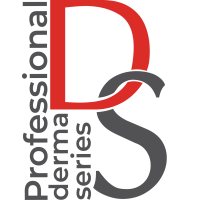Acne in the beautician’s cabin
The pilosebaceous structure is a hair and a sebaceous gland, the excretory ducts of which are always brought to the surface of the skin in the form of a single follicular opening.
Pathogenesis of oily problem skin:
- Follicular hyperkeratosis
- Sebum hyperproduction
- Colonisation of Propionibacterium acnes
- Disruption of the microbial balance
- Inflammation
Etiopathogenetic forms of acne:
- Ordinary: Comedonal, Papulopustular, Knotty
- Special: Acne in newborns, childhood; Inverse acne; Fulminant acne; Acne due to endocrinopathies; Acne tarda (late acne)
Clinical forms of acne: the usual ones that occur most often are comedonal, papulopustular, nodulocystic forms.
Morphological elements in acne: these are primarily open comedones (black dots) and closed ones. As the inflammatory process progresses and microorganisms reproduce, pustules become visible. Moreover, in more severe forms of acne, the affected area may undergo necrotic melting, leading to the formation of characteristic nodes and cysts.
Clinical manifestations of acne
- absence of inflammatory signs; open and closed comedones, up to 10 pustules
- papular rash, up to 10 pustules
- pronounced signs of inflammation, large papules, pustules
- cystic-indurated changes, pustules
The European classification recommends that we pay our attention to the assessment of the affected area.
0 – Clear/practically clear skin – No rash/ practically no rash (hyperemia, hyperpigmentation)
1 – Practically clear, practically no rash – Several open and closed comedones, several papules
2 – Mild acne – The affected area is less than half of the face, several open and closed comedones, several papules and pustules
3 – Moderate acne – The affected area is more than half of the face, multiple open and closed comedones, multiple papules and pustules, one node
4 – Severe acne – The affected area is the entire face, multiple papules, pustules, rarely nodes
5 – Very severe acne – Strongly pronounced inflammatory elements, nodes
If the affected area is the entire face plus the chest and back, then this is a severe form of acne that requires systemic treatment. In cases of severe acne, there is extensive inflammation, the presence of nodules, post-acne marks, and scarring. These conditions typically necessitate systemic treatment.
Causes
- Genetic predisposition
- Peripheral hyperandrogenism
- Impaired innate immunity
What are the reasons for such conditions? Peripheral hyperandrogenism refers to a genuine increase in androgen hormone levels.
Diagnostics
- Detailed medical history collection (duration of the process, signs of hyperandrogenism, genetic predisposition, concomitant diseases)
- Consultation of related specialists (gynecologist, endocrinologist)
- Laboratory diagnostics (general blood test, biochemical analysis, examination of the endocrine system)
Dermatologist VS Cosmetologist
Systemic – taking drugs per os, intravenous injection – Prescribed by a doctor
Local – all topical remedies, procedures – Recommended by a beautician
Acne Treatment Principles
- Relief of inflammation
- Prevention of the formation of new pathological elements
- Post-acne correction
- Anti-relapse therapy
Stop inflammation
Systemic and topical products
- retinoids
- AHA and BHA
- 5 alpha reductase blockers
- sulfur and zinc
- niacinamide
- benzoyl peroxide
Retinoids
GRANACTIVE RETINOID 2% (HPR Retinoid)
- The latest generation retinoid is retinoic acid ester. Does not convert to retinaldehyde and retinoic acid
- Binds to retinoid receptors on skin cells
- Regulates the transfer of genetic information from DNA to RNA, stimulates the synthesis of collagen, moisturising glycosaminoglycans
HPR SERUM with Granactive retinoid 2%
- Eliminates the appearance of acne and acne-like rashes.
- Reduces hyperkeratosis.
- By normalizing keratinization processes, it prevents horny scales from sticking together, that can clog pores.
- It reduces the synthesis of sebum, normalizes the proliferation of sebocytes, since the cells of the sebaceous gland, like keratinocytes, have receptors on the nucleus for retinol.
- It has an anti-inflammatory effect, blocks oxidative stress reactions in tissues, increases local cellular immunity of the skin.
AHA and BHA
- Hyperkeratosis elimination
- Anti-inflammatory effect
- Antibacterial properties
- Sebum reduction
Mandelic acid
Glycolic acid
Salicylic acid
Azelaic acid
PEEL-EXPERT LIGHT
- gently smoothes the microrelief
- accelerates tissue regeneration
- fills the skin with antioxidants
- stimulates thickening of the dermis
- moisturizes, enriching the NMF of the epidermis
рН 3,3 Gel
Mandelic acid 15%; Glycolic acid 6%; Lactic acid 5%; Salicylic 1.5%; Arginine; Allantoin
PEEL-EXPERT M
- skin microrelief smoothing
- elimination of hyperkeratosis and excessive sebum secretion
- elimination of epidermal hyperpigmentation
рН 1,9 Gel
Mandelic acid 40%
RENEWING ENZYM AHA SERUM
- Glycolic acid; Keratoline; Raspberry extract
Use daily, overnight, after skin cleansing as a preparation
PRE-PEEL LOTION
- Glycolic acid; Salicylic acid; Lactic acid; Phytic acid; Alcohol
Used for degreasing during the peeling procedure
pH 4.0
5 alpha reductase blockers
АС.NET™ – is the European leader in the dermatological treatment of oily skin problems..
Oleanolic acid:
- inhibits the work of 5-alpha-reductase
- blocks the synthesis of prostaglandins, reduces leukocyte infiltration
- has antimicrobial properties against Propionibacterium acnes
Nordihydroguaiaretic acid:
- has anti-inflammatory properties
- is an inhibitor of protein metabolism in the Golgi complex
- is a powerful antioxidant
TOTAL OIL-CONTROL SERUM
- Addresses all 4 oily skin concerns
- Powerful protection against bacterial growth
- Decreased activity of 5-alpha reductase by 68%
- DOES NOT dry the skin out
АС.NET™ (3%); Red algae extract; Salicylic acid; Aloe Vera
SULFUR
- has a keratolytic effect
- has a powerful anti-inflammatory effect, suppressing inflammatory mediators and reducing lipid peroxidation
- has an antidemadetic effect
- actively participates in the synthesis of connective tissue, stimulates regeneration processes
ZINC OXIDE
- antiseptic effect
- drying effect
- natural UV filter
NIACINAMIDE
- water-soluble form of vitamin B3
- has an anti-inflammatory effect by inhibiting the activity of 3-5-cAMP-phosphodiesterase
- inhibits the synthesis of triglycerides in sebocytes
- promotes an increase in the number of ceramides in the epidermis
Prevention of the formation of new pathological elements
- Cleansing
- Peelings
- Sebum-regulating care procedures
Anti-relapse therapy
- Regular procedures in the cosmetologist’s cabin
- Home skincare
Comprehensive program for the correction of oily and problematic skin
6-8 procedures, interval: 5-7 days
Clinical situation:
- Excessive sebaceous gland activity
- open +/- closed comedones
- Enlarged pores
- Single inflammatory elements
- Post-acne
Course program:
- Seboregulating care
- Peel Expert Light/M
- Sebum-regulating treatment with facial cleansing
- Peeling care Peel Expert M
- Peeling care Peel Expert M/Shine
- Peeling care Peel Expert Shine
- Peeling care Peel Expert Shine
SEBO-REGULATING CARE PROTOCOL WITH DEEP CLEANSING
- Cleansing P171 Ultra-norm cleansing gel, P175 Ultra-norm cleansing tonic
- Mask for 10 min, P200 Soft-peeling enzyme mask, rinse with water
- P100 Deep cleansing jelly mask for 15 minutes under the film. Carry out manual comedone extraction, antiseptic treatment
- P176 Total oil control serum + locally – P213 Local SOS solution
- P212 Sebo-norm mask – 15 min, rinse with water
- Targeted Serum
- Eye care – Р204 Matrix eye cream
- Finishing cream – P221 Lipid balancing light cream or H218 Sun-block emulsion SPF50
Options for combining Peel Expert peels with deep cleansing facial
Oily skin
1. To facilitate face cleansing BEFORE applying the Deep cleansing jelly-mask – P100
- If the skin is sensitive, has enlarged pores, “black dots”, narrow excretory ducts of the sebaceous glands, we use the Peel-Expert Light (M304) peeling protocol
- If the skin is dense, has multiple open and closed comedones we use the Peel-Expert M (M310) peeling protocol
Peel Expert peeling protocol + sebum-regulating care with deep pore cleansing
- Cleansing P171 Ultra-norm cleansing gel
- Mask for 10 min Р200 Soft-peeling enzyme mask, then rinse
- M303 Pre-peel lotion AHA&BHA.
М304 Peel-Expert Light / М – exposure time 3-5 min.
Neutralizer M311, then rinse with water - P100 Deep cleansing jelly-mask – for 15 minutes under the film. Carry out manual comedone extraction, antiseptic treatment. Spot – P213 Local SOS solution
- Р212 Sebo-norm mask – 15 min, then rinse with water
- P176 Total oil control serum
- Р204 Matrix eye cream
- Finishing cream P221 Lipid balancing cream or Н218 Sun-block emulsion SPF50
2. For sanitation AFTER deep pore cleansing, apply peels before Sebo-norm mask – P212
- If the skin is sensitive, has signs of dehydration, rosacea, use the Peel-Expert Light protocol – M304
- If the skin is tight and insensitive – Peel-Expert M – M310
Peel Expert peeling protocol + sebum-regulating care with deep pore cleansing
- Cleansing P171 Ultra-norm cleansing gel
- Mask for 10 min Р200 Soft-peeling enzyme mask, then rinse
- P100 Deep cleansing jelly-mask – for 15 minutes under the film. Carry out manual comedone extraction, antiseptic treatment.
- M303 Pre-peel lotion AHA&BHA.
М304 Peel-Expert Light / М – exposure time 3-5 min.
Neutralizer M311, then rinse with water - Р212 Sebo-norm mask – 15 min, then rinse with water
- P176 Total oil control serum
- Р204 Matrix eye cream
- Finishing cream P221 Lipid balancing light cream or Н218 Sun-block emulsion SPF50
HOME CARE FOR OILY PROBLEMATIC SKIN
- cleansing + toning Р171+Р175
- targeted serum Н177
- eye cream Н143
- day – ВВ cream extra-light; night – according to skin type Н191, Н222
- 1 time per week – masks Н146, Н104
Maintenance care
- Seboregulating care
- Preventive facial cleansing
- Superficial peels 1 time per month
- Daily home care



